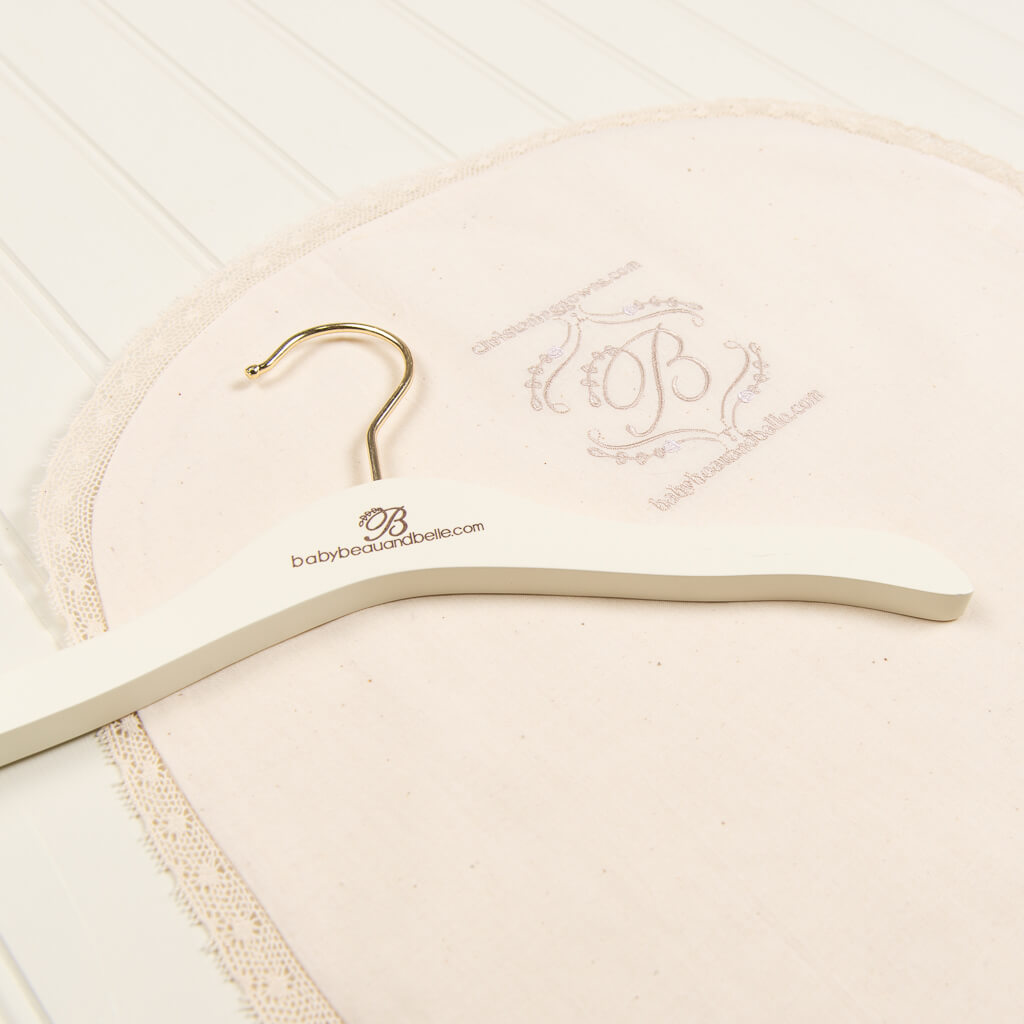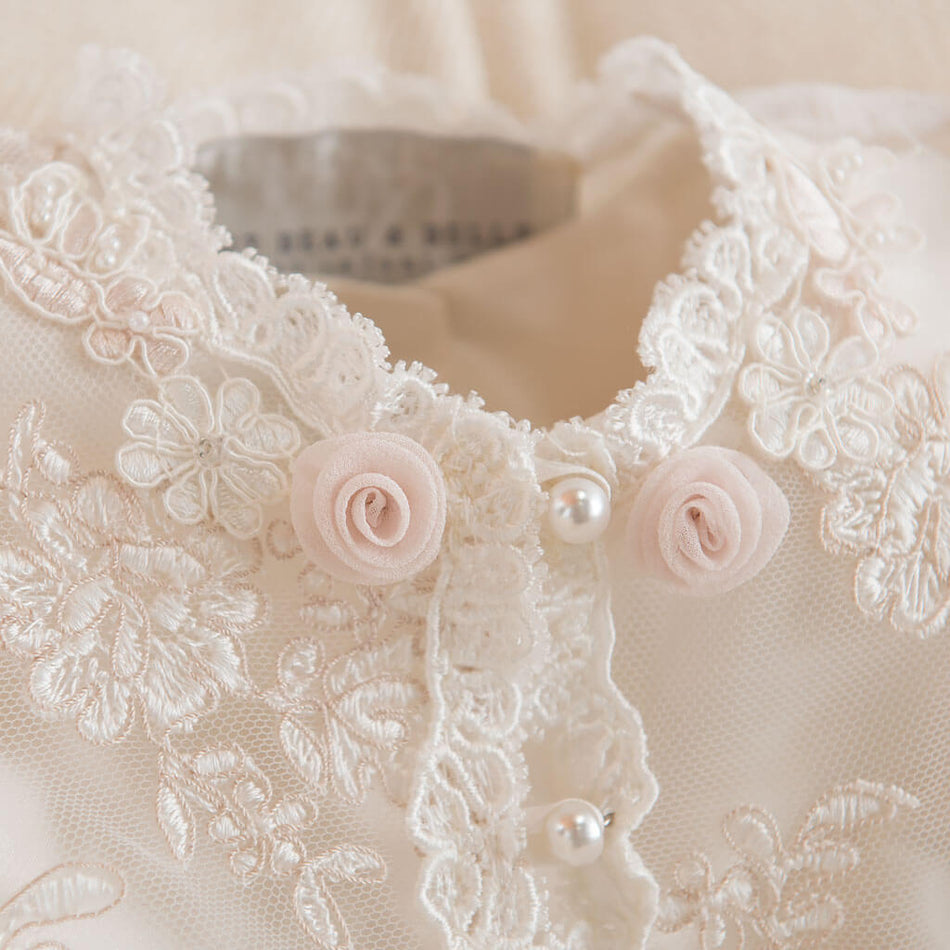A christening or baptism is such a beautiful and special time for your little one. It is not only a time that is shared with your friends and family, but connects you to past and future generations through the clothes and traditions. After searching and finding the perfect heirloom christening gown or baptism outfit, the dream is to pass down the family gown along with all of its hopes, memories, and prayers. After the ceremony you will be wondering how to preserve your christening dress. Not taking proper care of your delicate and special baptism gown can be a disservice to your future relatives, as improper storing can cause yellowing and can damage or prematurely age the materials easily. Below we have compiled some of the best tips we’ve found for storing your important items long term.
Care and Preservation
Care and Preservation

A christening or baptism is such a beautiful and special time for your little one. It is not only a time that is shared with your friends and family, but connects you to past and future generations through the clothes and traditions. After searching and finding the perfect heirloom christening gown or baptism outfit, the dream is to pass down the family gown along with all of its hopes, memories, and prayers. After the ceremony you will be wondering how to preserve your christening dress. Not taking proper care of your delicate and special baptism gown can be a disservice to your future relatives, as improper storing can cause yellowing and can damage or prematurely age the materials easily. Below we have compiled some of the best tips we’ve found for storing your important items long term.
Materials
All the heirloom baby clothes from our store are made with delicate silks, cottons, linens, and ribbons, which have not been chemically treated.
Dupioni silk
Our Dupioni silk is a natural textured silk woven from a double strand of silk yarn in a plain weave pattern. It is usually reeled and used to make fine or heavy yarns with irregular slubs at random intervals, which should not be considered flaws. The lumps, or slubs, add texture and visual interest to the fabric.
Pima Cotton
Our Pima cottons are extra soft and breathable, and also more durable than standard cottons.
Silk-Satin
Our silk-satin ribbons are soft and untreated for the baby, so light separation of the fibers should be expected.
Care
The first and arguably most important step to correct preservation and gown restoration is properly cleaning the items. Any body oils, stains, dirt, dust, or detergents left on items can damage the materials over time.
Dry Cleaning
The first and arguably most important step to correct preservation is properly cleaning the items. Any body oils, stains, dirt, dust, or detergents left on items can damage the materials over time. We highly recommend dry-cleaning all of our items because this is the best way to keep the materials in their original condition. Choose an experienced, reputable dry-cleaner that knows how to spot-test materials and treat your special occasion items with care. Be careful with “green” dry-cleaners, as they often clean items using water which can affect the items. Silk and dyed ribbons can especially change texture and color when washed with water, so if you do hand-wash silk garments keep this in mind.
Hand Washing
If you choose to hand-wash your items, use a very mild detergent and avoid bleaches, starches, and fabric softeners. Water, heat, and detergents can all affect the shape and color of materials so wash with caution, and rinse thoroughly! A very important step to preserving after hand-washing is ensuring that the garments are completely dry prior to storing them. Any dampness or chemicals left on the garments can cause the items to mildew, so rinsing multiple times and then completely drying the outfit is your best defense. To dry, you preferably want to roll the garments in a towel to get out excess water, and then lay the garments flat and let completely air dry. Sunlight and machine driers can bleach or harm the materials with too much heat, so air drying without direct sunlight is best. Drying racks are acceptable for stronger materials, but be sure that they don’t have any dyes or finishes to them, as these could bleed into the fabric.


Storage
Remember, no storage method is perfect, but by following these tips you can help ideally preserve your garment for generations to come!
Once clean and dry, stuff the items with acid-free tissue paper and either place them in a non-airtight cardboard box lined with acid-free paper, or hang them in a 100% Muslin Cotton Garment Bag (purchase our garment bag here). If you have a pair of clean, cotton gloves available, it's best to wear them each time you handle the items because even oils on your hands can affect the garment over time. Storing the garments completely flat is the best option since creases and folds over time can weaken fabrics and hanging can stretch fabrics, but stuffing with proper acid-free tissue paper can protect it and help the garment keep its shape better. You never want to store items in a plastic bin or bag as these can trap moisture. A non-airtight, acid-free lined box or cotton garment bag allow the materials to breathe while keeping out bugs, harmful light, or moisture. Be sure to put acid-free tissue paper between the materials and any metal or plastic items since these can harm the materials over time as well. You will want to avoid direct sunlight or areas such as an attic or basement which fluctuate with temperature and humidity. A yearly inspection of the garment is not only great for re-adjusting creases and folds which weaken the materials, but also allows you to fondly remember the special day! When you’re ready to use the outfit again, simply air out the garment for a few days and then gently steam out wrinkles and folds or if absolutely necessary, iron on very low setting.
Keeping the cleaning and preserving instructions with the garments along with a name tag, date of christening or baptism, and photos of the special day is a great way to share the experience with the future wearer. It also ensures they have the complete and correct information needed to pass on the gown themselves.
Remember, no christening gown storage method is perfect, but by following these tips you can help ideally preserve your garments for generations to come!









